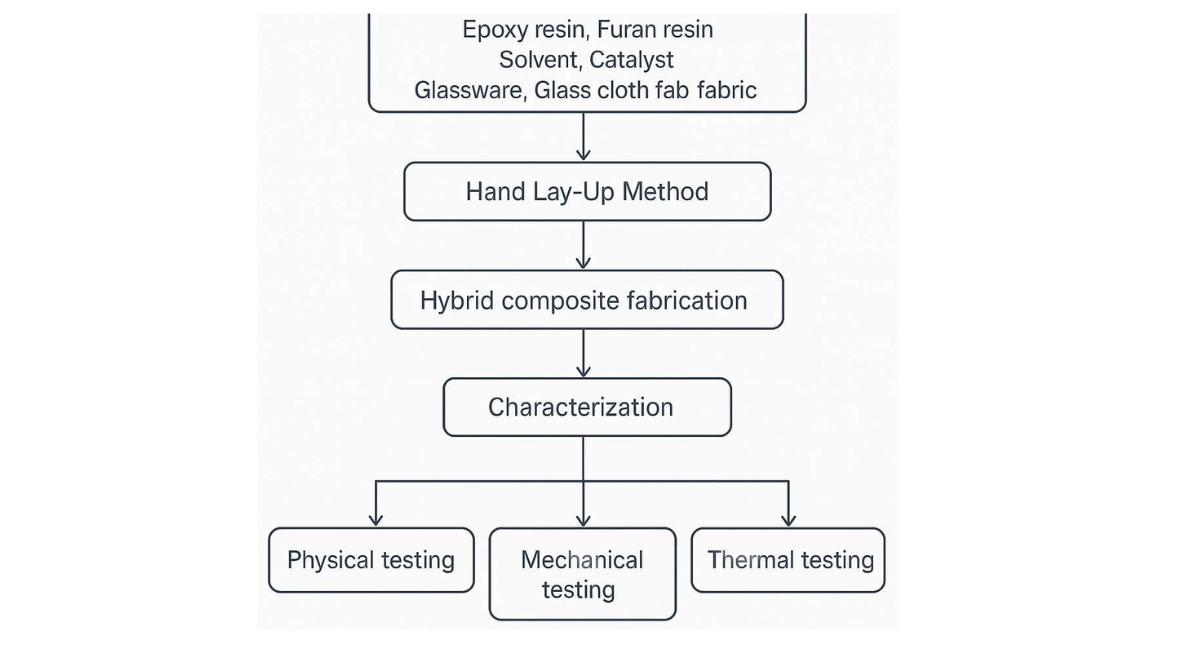Indexed In
Useful Links
Journal Highlights
Recommended Journals
Open Access Journals
DESCRIPTION
Composite materials, especially fibre-reinforced polymers (FRPs), have revolutionized various industries, including aerospace, automotive, and construction, due to their superior mechanical performance and lightweight characteristics. The development of polymer matrix composites (PMCs) began in the mid-20th century and has expanded with advancements in materials science. Notably, glass fibre-reinforced composites (GRCs), made by embedding glass fibres in a polymer matrix, have become essential for structural applications due to their high strength-to- weight ratio, ease of processing, and durability under aggressive environmental conditions [1]. Thermosetting resins, such as unsaturated polyester resins (UPR), epoxy resins, and vinyl ester resins (VER), are commonly used as matrix materials in GRCs due to their superior mechanical properties and thermal stability [2]. Vinyl ester resin, produced by the esterification of epoxy resins with acrylic or methacrylic acid, offers a unique combination of toughness, chemical resistance, and processability [3]. These properties have made VER particularly attractive in composite fabrication for applications in marine, automotive, and chemical industries. However, the environmental impact of petroleum-based resins, as well as their poor thermal stability under harsh operating conditions, have prompted the exploration of bio-based alternatives. Furan resin (FR), synthesized from furfuryl alcohol or furan-based monomers derived from biomass, offers promising properties such as enhanced thermal stability, flame resistance, and excellent chemical durability [4]. While furan resins have been explored for applications in structural composites, their integration with traditional resins like VER remains underexplored. Blending VER with FR could create hybrid materials with enhanced mechanical, thermal, and chemical properties. Previous studies have shown that combining different thermosetting resins often leads to enhanced synergy between the resins, improving the overall performance of the composite [5]. However, the challenges of ensuring proper interfacial adhesion between resin matrices and optimizing processing methods remain significant barriers. Forming in-situ Diels– Alder reactions between VER and FR may promote additional crosslinking, potentially leading to improved mechanical strength and chemical stability of the composite. To address these challenges, this study investigates the fabrication of VER-FR glass fibre-reinforced composites (GRCs) using the hand lay-up method, a well-established technique for composite fabrication due to its simplicity and effectiveness. This work aims to explore the mechanical properties of these composites with varying proportions of FR, focusing on their potential for applications in sustainable and high-performance composites. The results demonstrate that a 30% FR blend provides optimal mechanical performance, likely due to enhanced crosslinking formation. and interpenetrating network The experimental material included epoxy resin, furan resin, solvent, catalyst, glassware, and glass cloth fabric. The laminate fabrication utilized the "Handlay-up" method, known for its manual approach, simplicity, and effectiveness in composite manufacturing. The physical, mechanical and thermal characterization of composites has been done.

Figure 1: Flow chart of Methodology The study focused on fabricating and analyzing reinforced composites of Vinyl Ester-furan resin (VER-FR), which proved successful in both the fabrication and characterization phases. Notably, all the composite variations exhibited commendable mechanical properties. Among these, the composite with a furan resin (FR) content of 30% stood out, demonstrating the highest mechanical performance.
CONCLUSION
This study presents a successful approach to fabricating high performance glass-reinforced composites by blending Vinyl Ester Resin (VER) with Furan Resin (FR) using the Hand Lay Up method. The results demonstrate that the VER-FR composite, particularly with 30% Furan Resin content, exhibits significantly enhanced mechanical properties, showcasing its potential for demanding applications. The observed in-situ Diels-Alder reaction between VER and FR contributes to the material’s structural integrity and durability. These findings highlight the effectiveness of resin blending in composite fabrication, providing valuable insights for future developments in sustainable, high-strength composite materials. Future research should explore optimization strategies for resin formulation and expand testing to diverse environmental conditions to further unlock the potential of VER-FR composites in advanced industrial applications.
References
- Chowdhury IR, Pemberton R, Summerscales J. Developments and industrial applications of basalt fibre reinforced composite materials. J. Compos. Sci. 2022 ; 6(12):367. [Google Scholar]
- Bhaskaran SK, Boga K, Arukula R, Gaddam SK. Natural fibre reinforced vegetable-oil based polyurethane composites: A review. J. Polym. Res. 2023 ; 30(8):325. [Google Scholar]
- Králik M, Koóš P, Markovič M, Lopatka P. Organic and Metal–Organic Polymer-Based Catalysts—Enfant Terrible Companions or Good Assistants?. Molecules. 2024 ; 29(19):4623. [Google Scholar]
- Karunakaran J, Qiu H, Balaraman E. Synthesis of diverse heterocyclic frameworks using cyclopentadienones via the Diels–Alder strategy. Org. Chem. Front. 2021;8(20):5608-50. [Google Scholar]
- Parmar JS, Patel GR, Patel AK. Vinyl ester-based three-component IPNs for glass fibre reinforced composite applications. Adv. Polym. Technol. 2004 ; 23(1):71-5. [Google Scholar]
